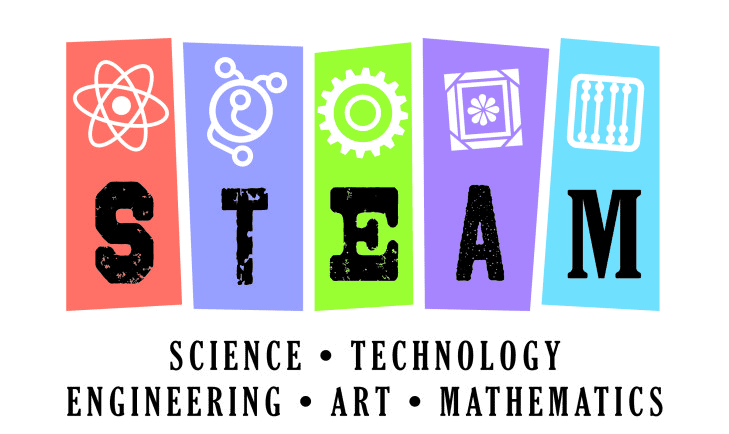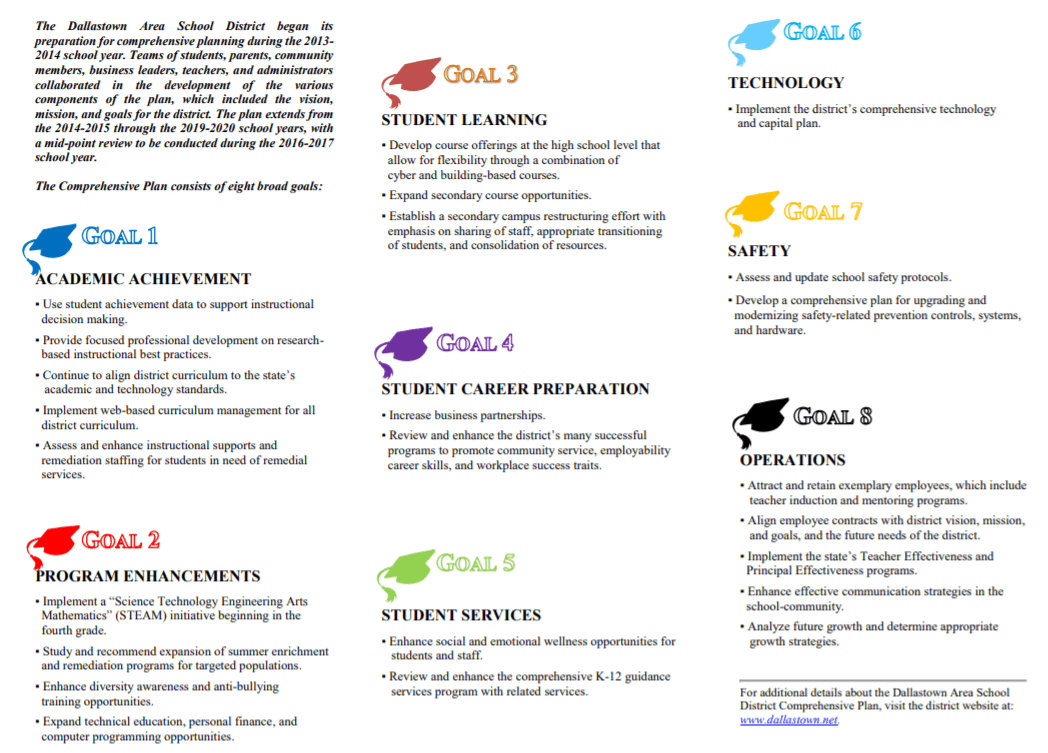By Dr. Stephanie Feree and Dr. Erin Heffler Dallastown Area School District

STEM and STEAM are the current “buzzwords” in many educational settings. Educators everywhere are creating maker spacers, designing lessons focused on STEM concepts, including coding, engineering and design thinking. Traditional models of the library and computer are shifting in schools based on STEM/STEAM initiatives. I use STEM and STEAM interchangeably in this post as STEM refers to Science, Technology, Engineering and Mathematics, while STEAM adds the ARTS component.
Both are effective and dependent upon the philosophy of the district and those implementing the initiative. STEM/STEAM initiatives include interdisciplinary, hands-on approaches that relate to real world applications. The STEM/STEAM platform has been around since the days of Sputnik in the 1950’s, however, in the early 2000’s it became evident that jobs in the field of STEM were cropping up in all disciplines. Despite this growth, interest in STEM/STEAM related jobs was not yet present in high school or college students.
With the emergence of ESSA and new federal guidelines, the college and career readiness expectations forced educational institutions to prepare students for a future, where jobs will be unknown and skills imperative. Employers began acknowledging the need for employees that are equipped with knowledge and skills necessary in a tech-driven, global economy.
According to PDE, “there will be 590,000 new and replacement jobs in Pennsylvania through 2026, with STEM jobs growing at over 9 percent” (https://www.education.pa.gov/Pages/STEM-Competition.aspx). The Pennsylvania Department of Education and Governor Wolf have designated specific funds “to establish a strong and innovative culture for STEM by strengthening STEM experiences for all students, supporting professional development for educators, and forming diverse partnerships across the commonwealth” (https://www.education.pa.gov/Pages/STEM-Competition.aspx).
During the design of the comprehensive plan in the Dallastown School district in 2014, one program enhancement was to implement a “Science Technology Engineering Arts Mathematics” (STEAM) initiative beginning in the fourth grade. In 2019, the STEAM initiative has evolved and is being expanded to the K - 3 level.

Work in the district with STEAM began with an active initiative at the Intermediate School, which includes students in grades 4 - 6.
Defining STEAM and Developing the Philosophy
STEAM in the district is not about adding additional lessons or activities to the already full curriculum. STEAM is about creating authentic problem solving experiences focused on an authentic audience that require research. Thus, they are not additional activities but a redesigned curriculum focused on problems that have been aligned to the PA Core Standards with a larger purpose for students to be able to productively and meaningfully become socially empowered.
Along with the development of authentic, integrated experiences, the activities were designed to move from student engagement to student empowerment. Some examples with the application on the 3D printing include redesigns of KNEX car wheels, parts for clean energy concept designs, calculator container designs for the center of desk groupings, etc.
Another part of defining STEAM and developing philosophy allowed for key staff members to participate in site visits. A cohort of staff members representing a cross-section of grades and backgrounds completed visitations to schools, workshops, and programs, including the Spark!Lab, to gather information regarding the philosophy and structures utilized to implement a STEAM curriculum.
Once complete, the team met in order to develop an overarching philosophy for the building and action plans for the implementation an engineering design process specifically in the science classrooms, iLibrary, and the Pathways Explorer Program (PEP).
At the K-3 level, site visits were scheduled to help to define the philosophy of a STEM program that would replace the traditional computer class with connection to the current library program. The participants were a mixed group of teachers that were not completely invested in redesign and change. The first visit was to a school that has embedded the STEAM curriculum into the regular education curriculum.
The regular education teacher managed the STEM curriculum through embedded activity designed to solve problems. The “specialists” supported the work in the classroom during their cycle visit. Teaching staff got to see how students were focused on problem solving and the integration of science, technology, and mathematics. This visit raised a lot of questions about the role of the computer class and the library as well as the regular education classroom.
The next visit was a more specific visit to a school that had redesigned a traditional computer program into a STEM program. The teachers were able to take the integration component of the first visit and tie it to the second visit, which more closely aligned to their current structure. Both visits positively contributed to the redesign of the traditional computer lab to a STEM classroom for the future.
We have been able to design a curriculum focused on the engineering design process, the Stanford d. school design thinking process and computational thinking through coding. The journey has evolved over time and has looked different than the 4 -6 journey but the site visits were instrumental in opening the minds of teachers and providing a visual example of what they may design for future learning.
Once STEAM was defined, visits occurred and philosophy was defined, the curricular work began in the two content areas iLibrary and science. The effective transformation in both content areas was representative of the people, the engagement and the desire to make a change for students. The individuals involved in the curriculum work were fully supported and took risks, while developing curricular activities that authentically solved problems.

Transformation from K - 3 Traditional Computer Lab to STEM Classroom
After many years of a traditional computer lab and library model, the K -3 staff worked to determine a way to create more innovative experiences for students through STEM activities. The traditional computer lab has been disbanded and the STEM classroom has evolved. It is an open space where students can engineer, design and code with a variety of tools in interactive, hands-on problem solving tasks.
The development of the curriculum began with defining the three areas of STEM: engineering process, design process and coding/computational thinking. After defining the three components to be found in the course, teachers discussed the process involved in activities. The process is the key factor in development of the tasks and assessment.
Teachers have identified what they want students to learn and be able to do through the task. Teachers then develop activities around a variety of literature that model process. The librarians will maintain a typical library setting while building in the “natural ties” from STEM that support the library curriculum.
The goal is for the STEM classroom and the library to morph into one course that focuses on STEAM tasks and processes in the next two years. The curriculum development is a work in process is evolving with each work period, where teacher collaboration has been key to the successful development of process and tasks.
Professional development in the development of the curriculum has been provided to STEM teachers and librarians throughout the school year as well as follow up has been planned for the following year. Regular education teachers will engage in professional development to help them understand the processes that will be occurring during the specials. The long-term goal is to take the STEAM concepts into the other specials and in regular education content.
STEAM UP Your Curriculum with these Top Ten Tips:
- Plan for action - Plan, Do, Check, Act!
- Be ready to listen to and tackle the roadblocks.
- Team Work Makes the Dream Work! Teach and model collaboration.
- Rigor and relevance!
- Seek opportunities for authentic audiences and/or solving problems.
- Get creative and take risks!
- Develop and define an overarching philosophy/vision.
- Research and visit an array sites to gain knowledge and ideas to assimilate and integrate into culture.
- Decide on a united Design Model.
- Empower your people and learners to be curious and question makers!
STEAM isn’t a course, it’s a philosophy!
Resources:
STEAM Up Your Curriculum Google Site:
https://sites.google.com/dallastown.net/steamupyourcurriculum/home
https://www.education.pa.gov/Pages/STEM-Competition.aspx
https://www.oercommons.org/groups/pa-stem-toolkit/2127/Contributing Author Dr. Stephanie Ferree:
Contributing Author Dr. Erin Heffler:

